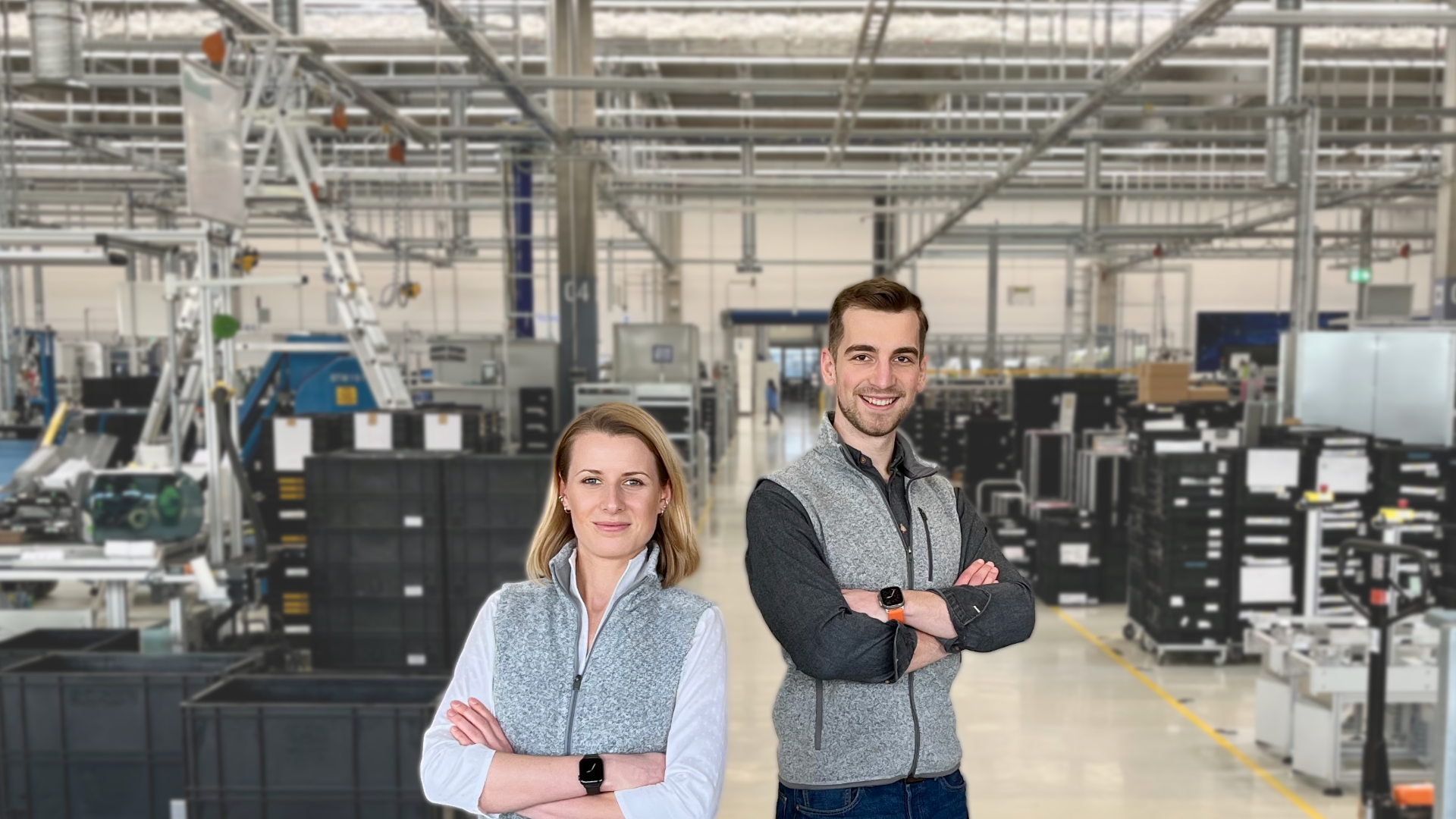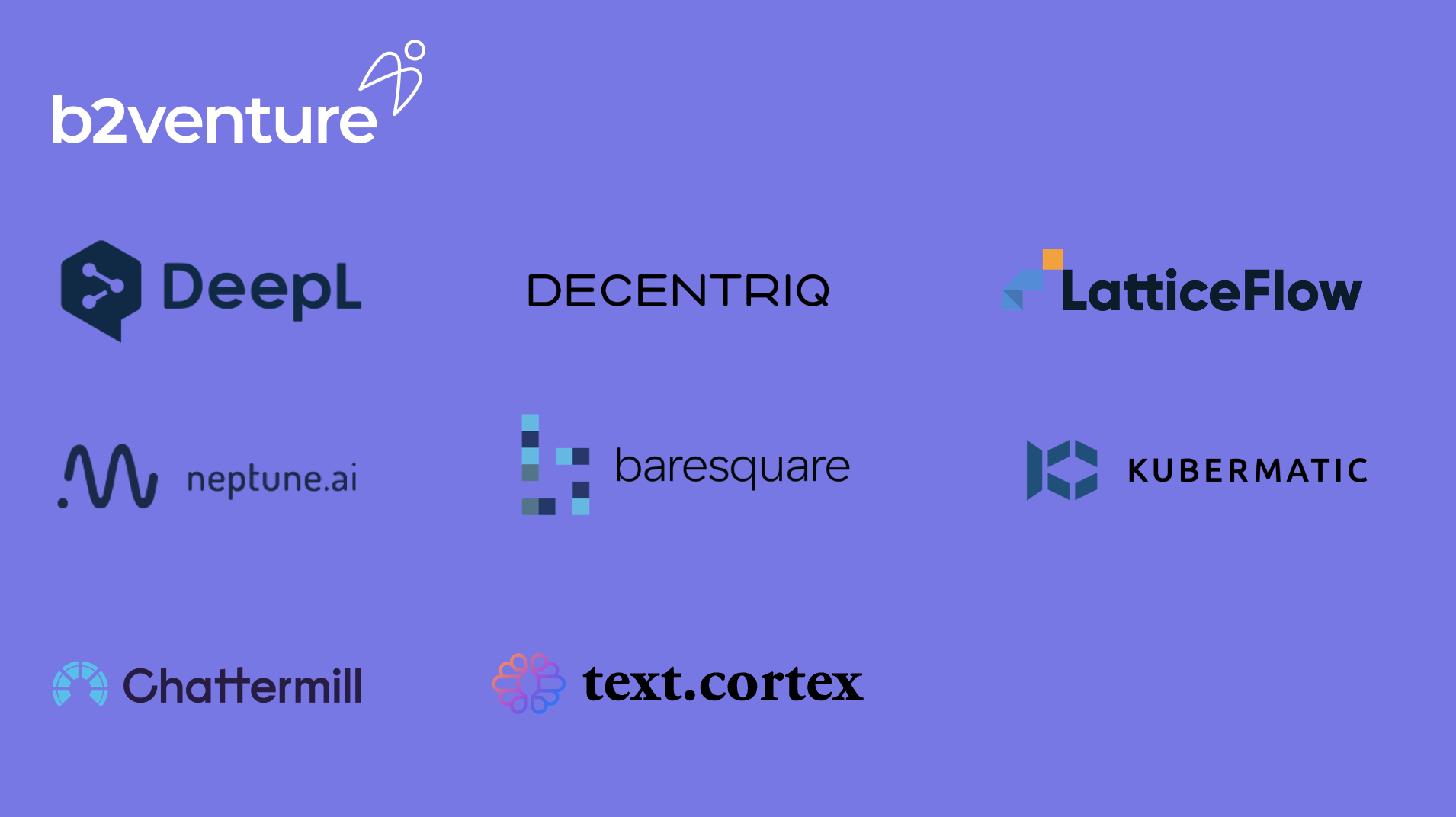Europe's Industrial Moment: Why AI Automation is the Key to Revitalizing Manufacturing Competitiveness
Europe's Industrial Moment: Why AI Automation is the Key to Revitalizing Manufacturing Competitiveness
Europe's Industrial Moment: Why AI Automation is the Key to Revitalizing Manufacturing Competitiveness
Manufacturing in Europe is at a pivotal crossroads. While it remains the backbone of the European economy, accounting for about 15% of the EU’s GDP and sustaining over 30m jobs across 2.2m enterprises, it currently faces several headwinds. Offshore competition, energy price pressures, and lagging digital investment threaten its competitiveness. In this context, AI-driven industrial automation is expected to become a critical enabler, driving productivity gains, operational resilience, and the next wave of manufacturing innovation in Europe.
Following our recent deep dives on industrial AI agents and robotics, we decided to zoom out to examine the broader picture. This post delves into the current state of European manufacturing, the forces reshaping its future, and why now is the opportune moment to reimagine industrial operations and build the next generation of intelligent manufacturing solutions.
The Pulse of European Manufacturing: Challenges and Opportunities
As the numbers highlight, manufacturing remains Europe’s economic powerhouse, built on decades of heavy-industry investment, world-class engineering expertise, and tightly knit clusters of specialized suppliers.
Today, however, the manufacturing sector is facing significant headwinds and is at risk of losing its vital role as Europe's most important economic sector:
- Margin Pressure: European manufacturers are caught in a vice. Labor costs are rising faster than in other sectors (up 5.3% YoY in Q4 2024). Energy prices are soaring. Meanwhile, Europe's share of global manufacturing exports has shrunk from 21% in 2000 to just 17% in 2023, as competitors in lower-cost regions gain ground. The net effect is a significant erosion of profit margins, forcing manufacturers to pursue efficiency improvements across their operations.
- Labor Constraints: The skills bottleneck is tightening across Europe’s shop floors. For example, nearly 57% of metalworking firms in Germany report critical staff shortages, with an average time to fill open positions exceeding four months. As experienced operators retire and fewer young workers enter industrial trades, capacity and innovation are both at risk.
- Supply Chain Disruptions: Escalating trade tensions, regional conflicts, and maritime disruptions have created unprecedented supply chain volatility, driving container shipping rates up by more than 500% at their peak and stretching lead times by weeks. This unprecedented volatility has pushed inventory and logistics costs to record highs, forcing manufacturers to rethink their sourcing and distribution strategies.
- Sustainability Imperatives: The manufacturing industry is undergoing a major shift toward sustainability, driven by ambitious decarbonization targets and rising carbon costs. Germany aims to cut industrial emissions by 49–51% from 1990 levels by 2030, while the EU ETS phases out free allowances and drives carbon prices toward EUR 250/ton by 2030. These pressures are compelling manufacturers to overhaul operations and adopt energy-efficient, low-carbon processes
Although industry insiders have long recognized these challenges, their aftermath is now becoming increasingly visible to everyone, culminating in a 2% decline in European industrial production in 2024.
Seizing the Opportunity: Europe's Unprecedented Window for AI in Manufacturing
As Europe’s factories grapple with production decline and mounting pressures, a unique convergence of the critical industry need previously outlined and the following additional factors is creating an unprecedented window for AI-driven automation in Europe:
- Technological Maturity: AI is now production-ready, with foundational models and edge computing delivering reliable, low-latency insights on the shop floor. Once theoretical capabilities such as autonomous lines, real-time defect detection, and self-optimizing maintenance are now commercially deployable. According to a recent McKinsey survey, 78% of organizations have adopted AI in at least one business function, highlighting how rapidly these technologies have moved from research to real-world use.
- Cost Equation Shifting: As labor costs rise globally and automation technologies become more affordable, the financial case for AI-augmented manufacturing grows stronger daily. For example, the estimated cost to implement AI applications for businesses now ranges from USD 50k to 500k, making it accessible to many mid-sized industrial companies and enabling payback periods measured in months.
- Policy Tailwinds: Post-pandemic resilience programs and the EU’s EUR 7.5bn Digital Europe Programme are channeling grants and subsidies into smart-factory upgrades and industrial digitalization, lowering the capital barrier for AI and automation projects. Complementing these efforts, the European InvestAI initiative aims to mobilize EUR 200bn, combining EUR 50bn in public funds with EUR 150bn from private investors, to advance AI infrastructure. This includes the establishment of AI gigafactories equipped for training advanced AI models. National programs like Italy’s "Piano Transizione 4.0" further support these initiatives by allocating EUR 13.4bn in tax credits for investments in advanced manufacturing and Industry 4.0.
- Industrial Heritage Advantage: Europe's deep manufacturing expertise provides the perfect foundation for AI augmentation, combining centuries of industrial knowledge with cutting-edge technology. While the “Industrial Heritage Advantage” is certainly applicable to the entirety of Europe, we believe the DACH region offers an especially fertile environment for industrial automation startups, considering the following factors:
- Manufacturing Powerhouse: Germany alone accounts for approximately 27% of the EU’s total industrial production, the highest share among member states. Additionally, nearly half (48.9%) of Germany’s manufacturing output was exported in 2022, underscoring the strong global recognition of its product quality.
This combination of sheer scale and global demand creates ideal conditions for testing, scaling, and commercializing next-generation industrial automation solutions.
- Engineering Talent Hotbed: Home to industrial legends like BMW, Siemens, and Bosch, the DACH region supplies an abundant pipeline of engineers skilled in both legacy manufacturing and advanced digital technologies. As of 2023, Germany’s mechanical and plant engineering sector employed approximately 1.03m people, making it one of the largest engineering workforces in the world.
- Proven Scale-Up Ecosystem: Success stories such as ProGlove’s acquisition by Zebra Technologies, Relayr’s acquisition by Munich Re and Celonis’s rapid rise to unicorn status inspire new entrepreneurs in the DACH region. Early employees from these exits now fuel the next generation of startups, for example, through angel syndicates like OMA Business Angels, which is a syndicate of ProGlove’s founding team as well as its first employees, that invest in early-stage B2B hardware and software ventures.
- World-Class Research Institutions: Technical universities such as RWTH Aachen, KIT, TU Munich, ETH Zurich, and EPFL drive applied R&D and graduate top-tier talent. Beyond these world-class institutions, the DACH region also cultivates an impressive volume of engineering talent at other universities. For example, in the winter semester of 2023/24, around 750k students (approximately 25% of total students) were enrolled in engineering-related programs in Germany. However, while the academic ecosystem in the DACH region is strong, there is still room for improvement when it comes to spinning out research-driven startups. In contrast to countries like Sweden, where researchers have distinct intellectual property rights and bear the right to commercialize their research, the DACH region's tech transfer and IP processes remain more bureaucratic, often slowing down entrepreneurial momentum.
Mapping the New Wave of Industrial Automation Startups
With a definitive need for industrial AI-driven automation and the above-mentioned factors amplifying the emergence of industrial automation startups, it’s logical that we’re seeing a flurry of activity among early-stage companies within the domain. For an overview, please find our market map below:

Image: From Pre-Production to Post-Production: Unveiling the Industrial Automation Startup Landscape
Moving along the industrial value chain, we observe that most industrial automation startup activity appears to be currently concentrated in the pre-production and production stages. In pre-production, there are several early-stage companies (e.g. Soff, Mandel AI and Didero) developing tools to automate core procurement tasks, such as reconciling invoices with purchase orders, comparing quotes side by side, and routing approvals to the appropriate stakeholder at the right time. There is also relevant early-stage activity in the area of Configure, Price, Quote (CPQ) automation, with players like Atira and Bryo building specialized solutions to automate quoting workflows.
Shifting our focus to production, we’re seeing strong momentum in the Analytics & Predictive Maintenance and Process Control & Optimization areas where automation can deliver substantial value by reducing downtime, increasing operational efficiency, and ensuring process consistency. Notable startups here include, among others, Tomorrow Things, which offers Things OS, an intelligent automation platform that creates digital twins of industrial assets through AI-generated blueprints, and Juna AI, which develops AI agents that autonomously run complex industrial processes to maximize production throughput, increase energy efficiency, and reduce overall emissions.
While post-production automation appears comparatively less saturated, we are observing various interesting automation startups in industrial logistics. These startups are working to automate logistics workflows ranging from order processing and shipment tracking to customer communications and invoice management.
Across the entire industrial value chain, we are also sensing strong innovation in solutions focused on Frontline Instructions & Knowledge Management. Here, Augmented Industries provides an AI-powered training platform designed for rapidly creating and delivering customized frontline worker training content, leveraging AI to create training content 5x faster than traditional methods.
It's truly exciting to witness so much momentum in industrial automation. The benefits aren't limited to one segment: there's meaningful value to be unlocked throughout manufacturing. As we explore this dynamic landscape, we'd like to share a few areas we find especially promising:
- Vertical-Specific Solutions: We see tremendous potential in domain-focused automation software tailored for high-value sectors like chemical processing. These industries face unique hurdles - complex physics, strict compliance requirements, and highly specialized workflows - that off-the-shelf tools can't address. Deep, vertical solutions that embed industry-specific expertise, from optimizing reaction kinetics to automating rigorous safety checks, can deliver faster returns and stronger competitive advantages.
- Manufacturing Knowledge Capture: With 28.2% of German manufacturing companies in Germany struggling to fill open roles, closing the expertise gap is critical. We're particularly excited by startups tackling this challenge with technology that automates time-consuming manual tasks and offers AI-powered, on-the-job upskilling. As industrial automation advances, the need for more highly qualified workers grows. Solutions that can capture distributed organizational knowledge and ensure ongoing training for evolving processes and systems help safeguard operational excellence and safety, making them invaluable to industry.
- AI-driven Hardware Development: Over the past decade, we have witnessed significant innovations in software development, particularly through the emergence of DevOps tools that have greatly enhanced engineering productivity. In contrast, hardware development processes remain largely outdated. Therefore, recent advancements in AI present a unique opportunity to revolutionize hardware development. According to PwC's "Digital Product Development 2025" study, 41% of industrial companies are already leveraging data analytics and AI in product development. Furthermore, companies anticipate that AI-driven digital product development will increase efficiency by 19%, reduce time-to-market by 17%, and lower production costs by 13% over the next five years.
- Agentic AI for End-to-End Process Optimization: Traditional AI-powered SaaS solutions have moved the needle for automation, but agentic AI, capable of reasoning, acting, and learning, enables true end-to-end workflow automation in real time. This couldn't be more timely, as manufacturers require both flexibility and speed to compete. We're particularly focused on emerging verticalized agent solutions that tackle complex industrial challenges with minimal human oversight, moving beyond co-pilot approaches to achieve complete workflow automation.
- Multi-system Orchestration as Critical Infrastructure: Multiple specialized agents create coordination challenges requiring middleware solutions. Factory operating systems that connect disparate agents deliver cross-process optimization. We believe that early leaders will establish standards that benefit from strong network effects and switching costs, as the value increases with each new agent deployed, yielding platform economics.
- Software for Robotics Automation: Though industrial robots have been a fixture for decades, their promise remains under-realized. Today, most operate in highly controlled settings and still rely on manual, "teach pendant" programming, hampering flexibility and slowing productivity gains. The next big leap won't come from adding more robots, but from deploying intelligent software that empowers robots to adapt and collaborate autonomously in dynamic environments. For a deeper look at this space, see our colleague Damian's recent robotics deep dive.
Join the Industrial AI Revolution
Europe's manufacturing renaissance depends on bold innovation. AI-driven automation is the unlock for greater productivity, agility, and sustainability. With technology, policy, and market forces converging, now is the time for startups to join the movement.
If you're a visionary founder using AI to redefine industrial production, we'd love to connect. Together, we can fuel Europe's next manufacturing resurgence!
Europe's Industrial Moment: Why AI Automation is the Key to Revitalizing Manufacturing Competitiveness
Manufacturing in Europe is at a pivotal crossroads. While it remains the backbone of the European economy, accounting for about 15% of the EU’s GDP and sustaining over 30m jobs across 2.2m enterprises, it currently faces several headwinds. Offshore competition, energy price pressures, and lagging digital investment threaten its competitiveness. In this context, AI-driven industrial automation is expected to become a critical enabler, driving productivity gains, operational resilience, and the next wave of manufacturing innovation in Europe.
Following our recent deep dives on industrial AI agents and robotics, we decided to zoom out to examine the broader picture. This post delves into the current state of European manufacturing, the forces reshaping its future, and why now is the opportune moment to reimagine industrial operations and build the next generation of intelligent manufacturing solutions.
The Pulse of European Manufacturing: Challenges and Opportunities
As the numbers highlight, manufacturing remains Europe’s economic powerhouse, built on decades of heavy-industry investment, world-class engineering expertise, and tightly knit clusters of specialized suppliers.
Today, however, the manufacturing sector is facing significant headwinds and is at risk of losing its vital role as Europe's most important economic sector:
- Margin Pressure: European manufacturers are caught in a vice. Labor costs are rising faster than in other sectors (up 5.3% YoY in Q4 2024). Energy prices are soaring. Meanwhile, Europe's share of global manufacturing exports has shrunk from 21% in 2000 to just 17% in 2023, as competitors in lower-cost regions gain ground. The net effect is a significant erosion of profit margins, forcing manufacturers to pursue efficiency improvements across their operations.
- Labor Constraints: The skills bottleneck is tightening across Europe’s shop floors. For example, nearly 57% of metalworking firms in Germany report critical staff shortages, with an average time to fill open positions exceeding four months. As experienced operators retire and fewer young workers enter industrial trades, capacity and innovation are both at risk.
- Supply Chain Disruptions: Escalating trade tensions, regional conflicts, and maritime disruptions have created unprecedented supply chain volatility, driving container shipping rates up by more than 500% at their peak and stretching lead times by weeks. This unprecedented volatility has pushed inventory and logistics costs to record highs, forcing manufacturers to rethink their sourcing and distribution strategies.
- Sustainability Imperatives: The manufacturing industry is undergoing a major shift toward sustainability, driven by ambitious decarbonization targets and rising carbon costs. Germany aims to cut industrial emissions by 49–51% from 1990 levels by 2030, while the EU ETS phases out free allowances and drives carbon prices toward EUR 250/ton by 2030. These pressures are compelling manufacturers to overhaul operations and adopt energy-efficient, low-carbon processes
Although industry insiders have long recognized these challenges, their aftermath is now becoming increasingly visible to everyone, culminating in a 2% decline in European industrial production in 2024.
Seizing the Opportunity: Europe's Unprecedented Window for AI in Manufacturing
As Europe’s factories grapple with production decline and mounting pressures, a unique convergence of the critical industry need previously outlined and the following additional factors is creating an unprecedented window for AI-driven automation in Europe:
- Technological Maturity: AI is now production-ready, with foundational models and edge computing delivering reliable, low-latency insights on the shop floor. Once theoretical capabilities such as autonomous lines, real-time defect detection, and self-optimizing maintenance are now commercially deployable. According to a recent McKinsey survey, 78% of organizations have adopted AI in at least one business function, highlighting how rapidly these technologies have moved from research to real-world use.
- Cost Equation Shifting: As labor costs rise globally and automation technologies become more affordable, the financial case for AI-augmented manufacturing grows stronger daily. For example, the estimated cost to implement AI applications for businesses now ranges from USD 50k to 500k, making it accessible to many mid-sized industrial companies and enabling payback periods measured in months.
- Policy Tailwinds: Post-pandemic resilience programs and the EU’s EUR 7.5bn Digital Europe Programme are channeling grants and subsidies into smart-factory upgrades and industrial digitalization, lowering the capital barrier for AI and automation projects. Complementing these efforts, the European InvestAI initiative aims to mobilize EUR 200bn, combining EUR 50bn in public funds with EUR 150bn from private investors, to advance AI infrastructure. This includes the establishment of AI gigafactories equipped for training advanced AI models. National programs like Italy’s "Piano Transizione 4.0" further support these initiatives by allocating EUR 13.4bn in tax credits for investments in advanced manufacturing and Industry 4.0.
- Industrial Heritage Advantage: Europe's deep manufacturing expertise provides the perfect foundation for AI augmentation, combining centuries of industrial knowledge with cutting-edge technology. While the “Industrial Heritage Advantage” is certainly applicable to the entirety of Europe, we believe the DACH region offers an especially fertile environment for industrial automation startups, considering the following factors:
- Manufacturing Powerhouse: Germany alone accounts for approximately 27% of the EU’s total industrial production, the highest share among member states. Additionally, nearly half (48.9%) of Germany’s manufacturing output was exported in 2022, underscoring the strong global recognition of its product quality.
This combination of sheer scale and global demand creates ideal conditions for testing, scaling, and commercializing next-generation industrial automation solutions.
- Engineering Talent Hotbed: Home to industrial legends like BMW, Siemens, and Bosch, the DACH region supplies an abundant pipeline of engineers skilled in both legacy manufacturing and advanced digital technologies. As of 2023, Germany’s mechanical and plant engineering sector employed approximately 1.03m people, making it one of the largest engineering workforces in the world.
- Proven Scale-Up Ecosystem: Success stories such as ProGlove’s acquisition by Zebra Technologies, Relayr’s acquisition by Munich Re and Celonis’s rapid rise to unicorn status inspire new entrepreneurs in the DACH region. Early employees from these exits now fuel the next generation of startups, for example, through angel syndicates like OMA Business Angels, which is a syndicate of ProGlove’s founding team as well as its first employees, that invest in early-stage B2B hardware and software ventures.
- World-Class Research Institutions: Technical universities such as RWTH Aachen, KIT, TU Munich, ETH Zurich, and EPFL drive applied R&D and graduate top-tier talent. Beyond these world-class institutions, the DACH region also cultivates an impressive volume of engineering talent at other universities. For example, in the winter semester of 2023/24, around 750k students (approximately 25% of total students) were enrolled in engineering-related programs in Germany. However, while the academic ecosystem in the DACH region is strong, there is still room for improvement when it comes to spinning out research-driven startups. In contrast to countries like Sweden, where researchers have distinct intellectual property rights and bear the right to commercialize their research, the DACH region's tech transfer and IP processes remain more bureaucratic, often slowing down entrepreneurial momentum.
Mapping the New Wave of Industrial Automation Startups
With a definitive need for industrial AI-driven automation and the above-mentioned factors amplifying the emergence of industrial automation startups, it’s logical that we’re seeing a flurry of activity among early-stage companies within the domain. For an overview, please find our market map below:

Image: From Pre-Production to Post-Production: Unveiling the Industrial Automation Startup Landscape
Moving along the industrial value chain, we observe that most industrial automation startup activity appears to be currently concentrated in the pre-production and production stages. In pre-production, there are several early-stage companies (e.g. Soff, Mandel AI and Didero) developing tools to automate core procurement tasks, such as reconciling invoices with purchase orders, comparing quotes side by side, and routing approvals to the appropriate stakeholder at the right time. There is also relevant early-stage activity in the area of Configure, Price, Quote (CPQ) automation, with players like Atira and Bryo building specialized solutions to automate quoting workflows.
Shifting our focus to production, we’re seeing strong momentum in the Analytics & Predictive Maintenance and Process Control & Optimization areas where automation can deliver substantial value by reducing downtime, increasing operational efficiency, and ensuring process consistency. Notable startups here include, among others, Tomorrow Things, which offers Things OS, an intelligent automation platform that creates digital twins of industrial assets through AI-generated blueprints, and Juna AI, which develops AI agents that autonomously run complex industrial processes to maximize production throughput, increase energy efficiency, and reduce overall emissions.
While post-production automation appears comparatively less saturated, we are observing various interesting automation startups in industrial logistics. These startups are working to automate logistics workflows ranging from order processing and shipment tracking to customer communications and invoice management.
Across the entire industrial value chain, we are also sensing strong innovation in solutions focused on Frontline Instructions & Knowledge Management. Here, Augmented Industries provides an AI-powered training platform designed for rapidly creating and delivering customized frontline worker training content, leveraging AI to create training content 5x faster than traditional methods.
It's truly exciting to witness so much momentum in industrial automation. The benefits aren't limited to one segment: there's meaningful value to be unlocked throughout manufacturing. As we explore this dynamic landscape, we'd like to share a few areas we find especially promising:
- Vertical-Specific Solutions: We see tremendous potential in domain-focused automation software tailored for high-value sectors like chemical processing. These industries face unique hurdles - complex physics, strict compliance requirements, and highly specialized workflows - that off-the-shelf tools can't address. Deep, vertical solutions that embed industry-specific expertise, from optimizing reaction kinetics to automating rigorous safety checks, can deliver faster returns and stronger competitive advantages.
- Manufacturing Knowledge Capture: With 28.2% of German manufacturing companies in Germany struggling to fill open roles, closing the expertise gap is critical. We're particularly excited by startups tackling this challenge with technology that automates time-consuming manual tasks and offers AI-powered, on-the-job upskilling. As industrial automation advances, the need for more highly qualified workers grows. Solutions that can capture distributed organizational knowledge and ensure ongoing training for evolving processes and systems help safeguard operational excellence and safety, making them invaluable to industry.
- AI-driven Hardware Development: Over the past decade, we have witnessed significant innovations in software development, particularly through the emergence of DevOps tools that have greatly enhanced engineering productivity. In contrast, hardware development processes remain largely outdated. Therefore, recent advancements in AI present a unique opportunity to revolutionize hardware development. According to PwC's "Digital Product Development 2025" study, 41% of industrial companies are already leveraging data analytics and AI in product development. Furthermore, companies anticipate that AI-driven digital product development will increase efficiency by 19%, reduce time-to-market by 17%, and lower production costs by 13% over the next five years.
- Agentic AI for End-to-End Process Optimization: Traditional AI-powered SaaS solutions have moved the needle for automation, but agentic AI, capable of reasoning, acting, and learning, enables true end-to-end workflow automation in real time. This couldn't be more timely, as manufacturers require both flexibility and speed to compete. We're particularly focused on emerging verticalized agent solutions that tackle complex industrial challenges with minimal human oversight, moving beyond co-pilot approaches to achieve complete workflow automation.
- Multi-system Orchestration as Critical Infrastructure: Multiple specialized agents create coordination challenges requiring middleware solutions. Factory operating systems that connect disparate agents deliver cross-process optimization. We believe that early leaders will establish standards that benefit from strong network effects and switching costs, as the value increases with each new agent deployed, yielding platform economics.
- Software for Robotics Automation: Though industrial robots have been a fixture for decades, their promise remains under-realized. Today, most operate in highly controlled settings and still rely on manual, "teach pendant" programming, hampering flexibility and slowing productivity gains. The next big leap won't come from adding more robots, but from deploying intelligent software that empowers robots to adapt and collaborate autonomously in dynamic environments. For a deeper look at this space, see our colleague Damian's recent robotics deep dive.
Join the Industrial AI Revolution
Europe's manufacturing renaissance depends on bold innovation. AI-driven automation is the unlock for greater productivity, agility, and sustainability. With technology, policy, and market forces converging, now is the time for startups to join the movement.
If you're a visionary founder using AI to redefine industrial production, we'd love to connect. Together, we can fuel Europe's next manufacturing resurgence!

The Author

Anna Bosch
Principal
Anna is Principal in the b2venture fund team, focusing on software solutions across a range of verticals, including EdTech, FinTech, and sustainability, as well as being our in-house expert for all things ESG.
Team

















.png)




.jpg)
-min.png)


.jpg)














































.jpg)





















